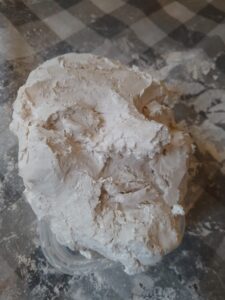
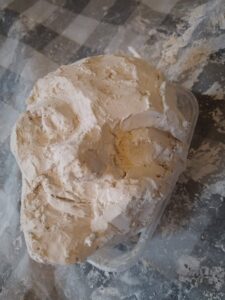
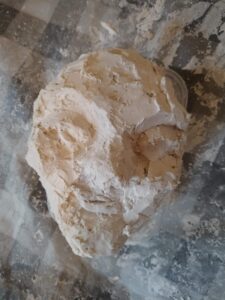
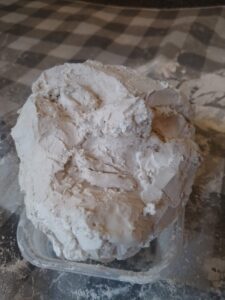
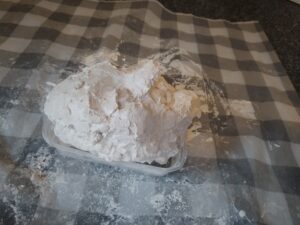
Month: January 2021
Spin


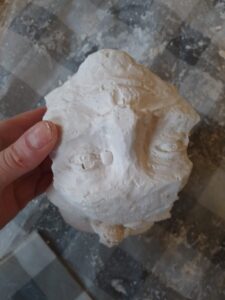

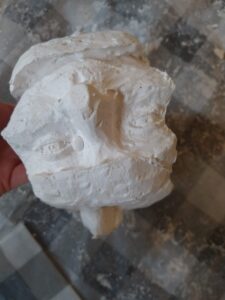
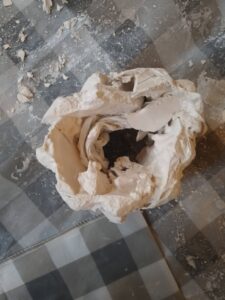
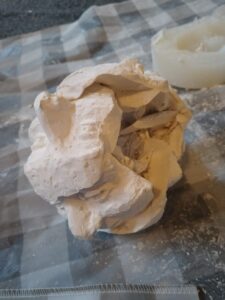
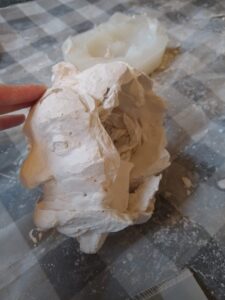

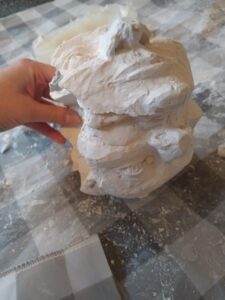
Moon face in a digital gallery
As part of the MAFA 2022 online exhibition project Mia and Will are trying to set up a digital gallery. I sent Mia some of the files of my 3d scans se she could see if we could put digital sculpture in the space, and it worked!! its really interesting to see how the computer interpreted my work as black as I’ve never seen it that way. Its also nice fore me to see my work presented alongside that of my piers! once Mia and Will have got more of a hang of how to make digital exhibitions I am going to try to talk to them about the alternative ways I could percent my work in the space as I think this would be a really interesting thing to experiment with!
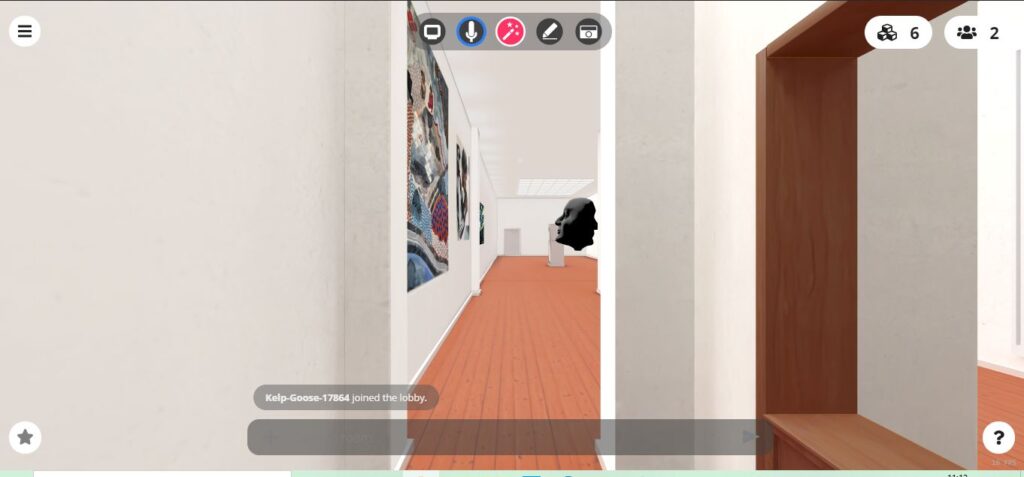

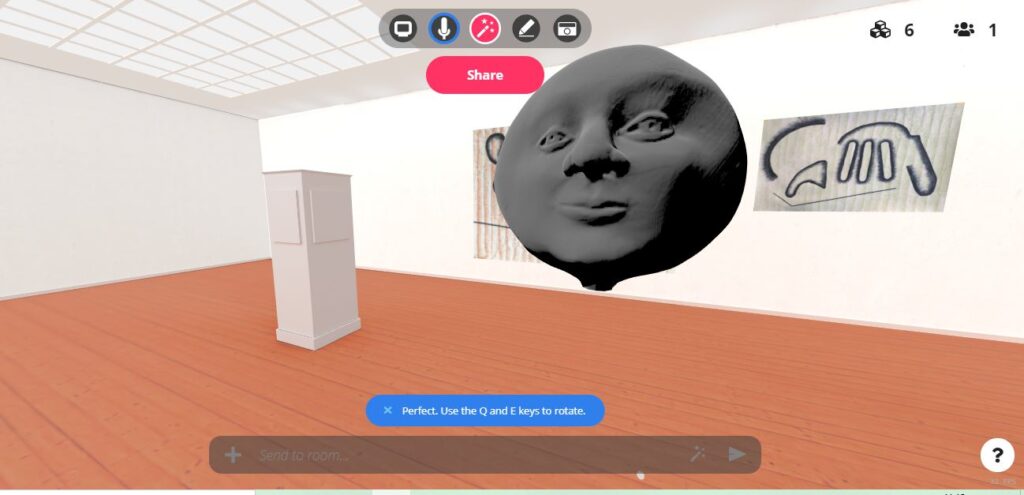

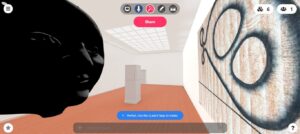
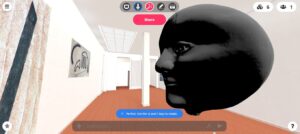


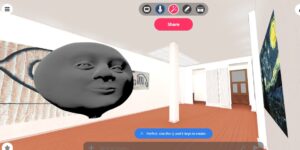
Art Power – From Image to Image File-and Back
I was interested in reading this chapter because I have never relay worked digitally before and so i think its important for me to understand the implications of essentially creating a set of data rather than an object.
Groys discusses the idea that as the digital images exists only as a set of instructions, each technological device a digital image is displayed on will display it slightly differently, thus creating a new work each time and removing some level of authorial control form the artist. This is a really new idea to me, that i don’t necessarily know how my work is going to appear to any particular viewer, however I find this quite an exciting prospect! I like the idea of each viewer getting an original and personal experiences.
Groys also explains how digital files can decay over time as technology changes and ceases to be able to run the file. The idea that my digital work is perhaps more temporary than my physical work is really interesting, i feel it ties the work more closely to the time it was made, which is perhaps appropriate as the work is very linked to the idea of the pandemic.
The overriding idea I took form this chapter is that I should think of my digital worked, particularly my 3d scans of my sculptures as the DNA of my work. As an artist I am creating sculpture, scanning it to extract its DNA, documenting its DNA and displaying it in digital/2D form and then making the DNA accessible to my viewers so they can grow their own versions of my work. Relating back to Art in the Age of Biopolitics, I feel that though 3d scanning my sculpture I am extracting the works aura/DNA and then making said aura available on line for those who are interest. Like in the natural world I don’t expect the 3D prints to be identical to my sculptures, I se the 3D printing as the nurture side of the nature nurture argument. I believe that each person who prints out my work will receive the aura/ DNA of my original work but with a different narrative. In this way I think my work has become a lot more about birth and evolution than i expected, but this excites me!
Art power – Art in the Age of Biopolitics
In this Chapter Groys introduces the issue of the copy/ documentation in the art world today. He suggests that although a copy or document of an artwork can never replace the original, it can take on the ‘aura’ of its own, taking up the mantle of the original and becoming an artwork in its own right.
For an artwork or a document to acquire an ‘aura’, Groys argues that it must have a history or ‘narrative’ attached to it. For example a photograph of a Van Gogh painting taken on someones Holiday and then exhibited in a exhibition about said holiday will have an ‘aura’ that is at once related to the Van Gogh original piece, the idea of travel and the idea of the reverence we pay to ‘great art’.
Having read this chapter I feel now that my project is about the spreading of aura. I want viewers to be able to access some of the aura of my sculptural work through the different kinds of documentation I have created, even if that means the aura is adapted or altered by the different narrative of each medium an viewing. I feel that often photographed of sculpture struggle to capture any of the aura of a sculpture and so my aim is to capture as much as possible by working with a verity of documentary mediums that can be seen as artworks in their own right, but perhaps with some kind of shared aura.
In the chapter Groys is a little scathing about the idea of the copy, suggesting that we only need copies because in todays consumerist society we all demand and expect to have things brought to us rather than expect to make pilgrimages to originals. I disagree that copies come about dew to human laziness and instead believe that for some people, particularly during covid, copies and documentation are often the only way they can interact with work. For that reason I think it is important for all work to have interesting and affective documentation that should be seen as just as important as the original work.
Boris Groys, Art Power – Introduction
I have been aware of this book for book for a wile through my History of Art courses. I have read sections of it in reaction to documentation and curation so I was aware of Groys’ interest in duality and was interested in how his righting might relate to my work.
I have got a copy of the book and have just read the introduction. Groys talks about plurality and paradox, thesis and antitheses. To him Modern and Contemporary art is comprised of assertions and oppositions that has created an ever widenings definition of Art and variation of work. Wherever this is a light a shadow is created to neutralist its power and resort balance. This idea of plurality and balance is something I am trying to directly engage with in my work. I like the idea that each medium I work in to create my pieces balances the aspects of the other mediums and in doing so adds to a grater, more interesting whole. I see my experimentation with creating one work in multiple dimensions as perhaps more of a discos than Gorys’ description of neutralising contradictions, but I can certainly see his interest in plurality in my own work.
Groys also speaks about Modern and Contemporary art as being either politicly or market motivated. At the moment I’m not really sure where my work falls into that dichotomy or even if it does. At the moment the way I’m working seems to speak of an individual as a pluralistic being witch I suppose could be quite spiritual/philosophical and so political. But I think it will become clearer as my project progresses if my work is ideologically motivated or if I intend it to be more of a commodity that simply exists to be itself.
For Groys the exhibition, he specifically mentions Biennials, are the perfect stage to represent the balance of power in Modern and Contemporary art. Seemingly Groys feels that it is only when works are viewed together that we can fully understand the conceptual/material/ideological dialogue or plurality that exists in Modern and Contemporary art. I feel that although each of the elements that makes up my work can be experienced separately, as Groys suggests, a viewer can best come to terms with the complexity of my work when all the elements are experienced together. However, in the case of my work I’m not sure if if an exhibition space is the best way to experience the full plurality of my work. I think that my work can best be understood slowly in a small un-monumental environment, which is why I am making my 2d work in business card form so it can be easily taken home and experienced slowly and fully. I like the idea that instead of studying my work in a gallery, viewers engage in the work. They perhaps see the 2d poster, learn about the concept, take a business card sized version of the work home, see the digital image, print the 3d sculpture and then over a period of time experience all three elements.
Other chapters I want to read:
- Art in the Age of the Biopolitics: From Artwork to Art Documentation
- From Image to Image File – and Back: Art in the Age of Digitization
- Multiple Authorship
- Critical reflections
Jaume Plensa – sculpting styles
Plesna make monumental sculpture witch is usually figurative or of just a face. His faces are usual manipulated subtly in some way, witch he does using 3d modelling software. His work often is made out of mesh and is transparent and i feel resonates with my digital work. He also works with stone and other more substantial materials and although his scale is totally different to what I am interested in at the moment, the subtlety of his manipulations to his faces is something I would like to explore.
In a 2019 article discussing his work Plesna describes being interested in transients and the intangible (the spirit) witch he materialises through his sculpture. I think the way he achieves other worldliness through subtle manipulations could be something i could use in my work, as the digital nets I am making seem to lend themselves so well the the surreal.
https://jaumeplensa.com/gestorPlensa/Moduls/bibliography/press/pdf/60/2019%20Forbes.pdf
It is also interesting to look at Plesna’s work on paper. There is a clear relationship between his 2d and 3d work, witch is something I am trying to achieve in my work.
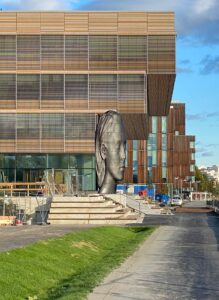

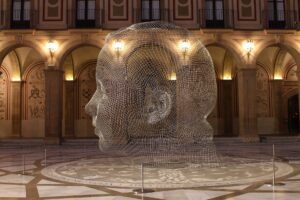
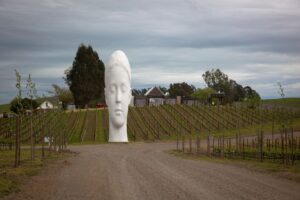
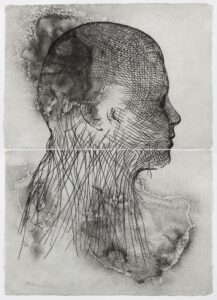
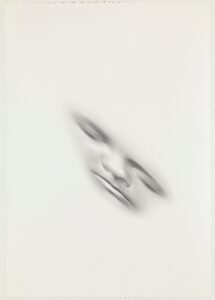
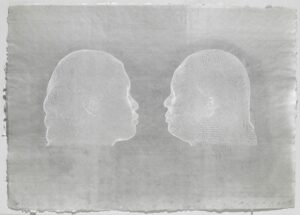
RAJNI PERERA – sculpting styles
Rajni Perera recently had an exhibition, Traveller, at the Tramway Gallery in Glasgow (witch I sadly missed dew to Covid…).
“Taking place in a future that could be now or may have already happened, Traveller speaks directly to issues of sovereignty, belonging, identity and personhood. As times of scarcity loom large, and as nation states push and pull on its citizenry, we see the diasporic person become the focus of the future. The Travellers are protected by way of ancestral armor developed for body and spirit, and adapted to fit behaviours of care and nourishment, while facing the dangers of off-world commute, inhospitable terrain, and territorial dispute.These vestments have been produced slowly, in some cases over the course of many centuries. The diasporic Traveller has mutated into an optimal evolutionary state, like the flowers of Fukushima, emerging beautifully while dying in some ways and being reborn in others. Their mythologies join hands and worlds through bloodlines, through warp and weft, all the way through to the place where the formerly displaced are presently powerful, safe, protected and flourishing. It is an ancient and boundless state to which they have returned, many millennia ahead of and behind us.”
Even though I don’t see my work as related to belonging, I do feel my work connects with this sense of future/now/timeless/syfy quality that Perea’s work has. I think the duality of my work lends itself to the idea of alternate universes or versions of ourselves, with the digital work feeling quite futuristic and the sculptural work feeling quite calm, small and subtle.
I really like the way Perea manages to create a continues aesthetic throughout her 3d and 2d work, but how each medium has different property and adds something to the other (dimensional synergy?). I really really like her use of colour and flatness in both her sculpture and painting and feel I should play around with colour a bit more in my 3d printed work.
I wonder if I should add more patterns to my 2d work? and bolder colours to my digital work, certainly something to look into. I also want to play around with distorting features as well we the shape of my faces.

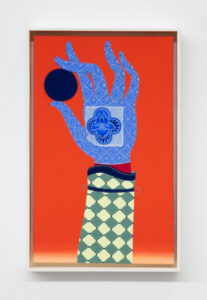
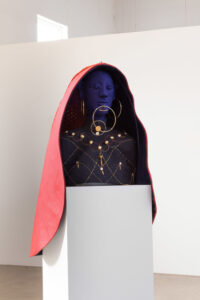
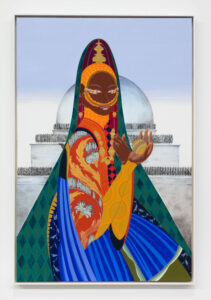
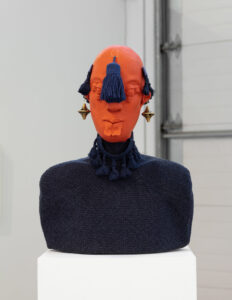

https://www.rajniperera.com/
Otto Gutfreund – sculpting styles
Gutfreund was a Czech sculptor working in the early 20th century. He has worked in a number of different styles but that all seem to be intentionally stylised or abstracted in some way. He seems to be primarily interested in shape and surface quality (like me) as he seems to play around with that a lot. I think both his smooth flattened style and his more cubist wavy style could look good in digital/net formats an so it is maybe work me making some faces in a similar style to him?

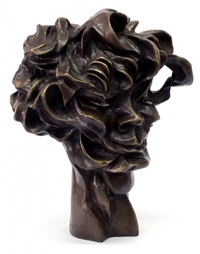
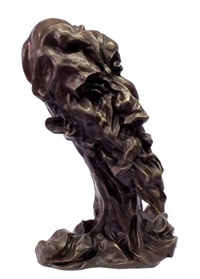
Giacometti – sculpting styles
After experimenting with both smooth and uneven styles of sculpting and seeing how they both looked in digital form I have decided to experiment more with the style of sculptures I am making.
I want to look at a few artists who abstract the human face in different ways and achieve different affects.
Giacometti is a sort of obvious starting point as his style feels like a more textured and elongated version of my Pulled face. I would be interested in making work with more texture, like his, as I was really impressed with how the more textured work (pulled face) looked in the 3D digital format.
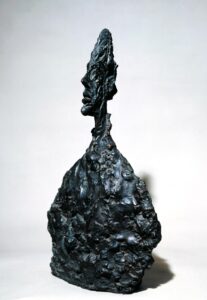


![Isabella Inskip / MA FINE ART 4 STUDIO AND RESEARCH (2020-2021)[YR]](https://blogs.ed.ac.uk/s1758578_ma-fine-art-4-studio-and-research-2020-2021yr/wp-content/uploads/sites/2953/2021/03/cropped-Screenshot-2021-03-06-at-23.19.39.png)